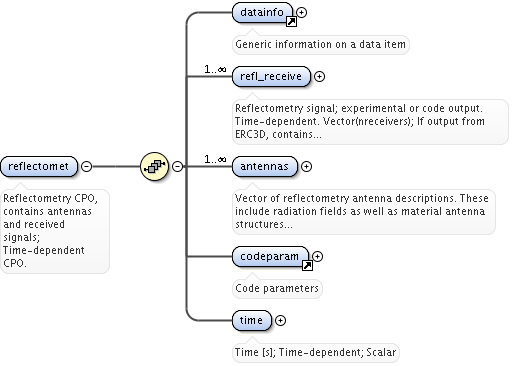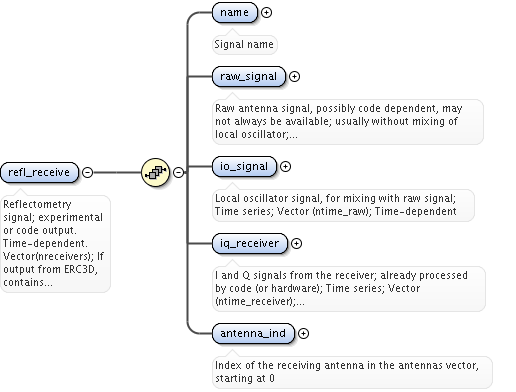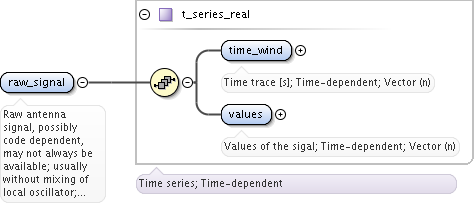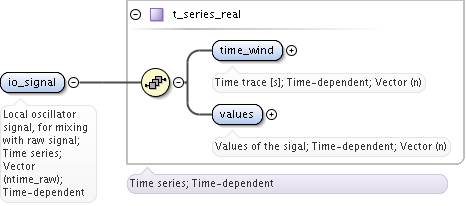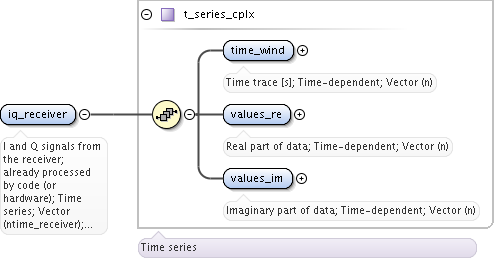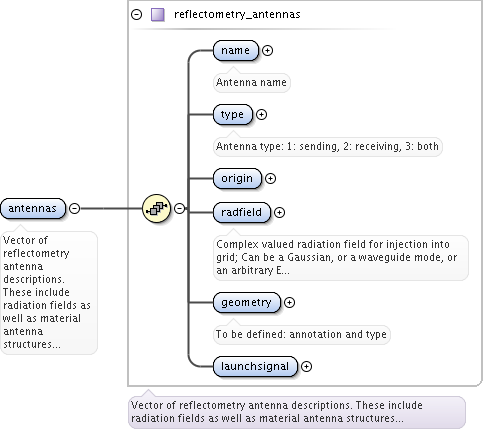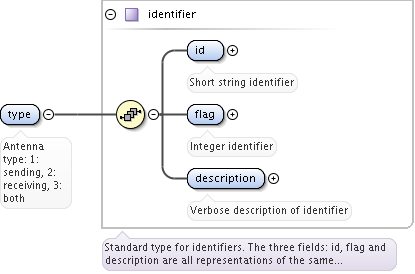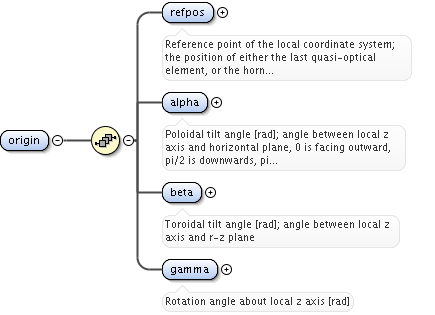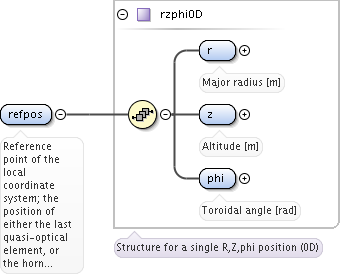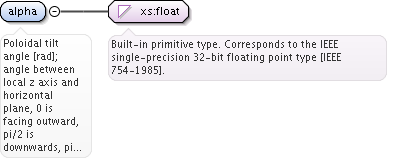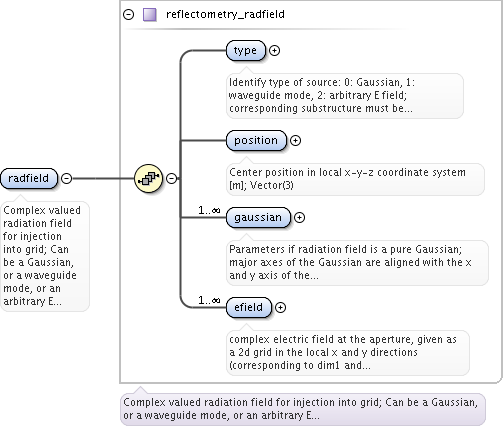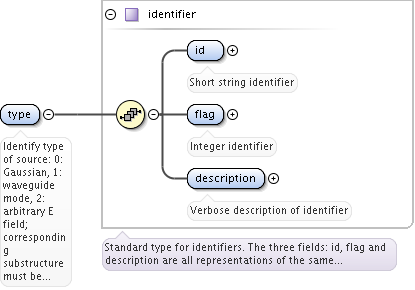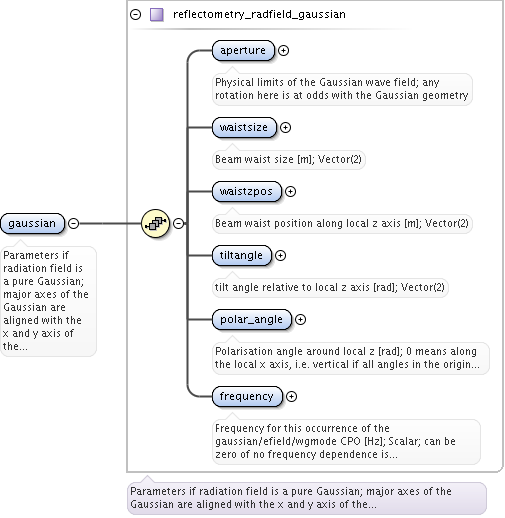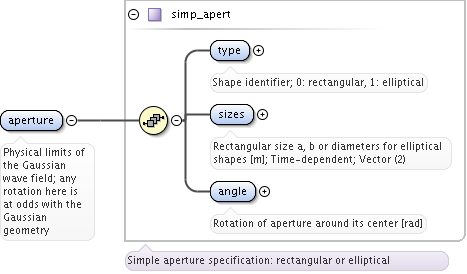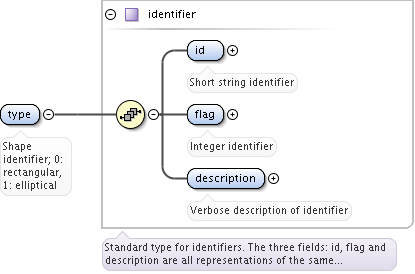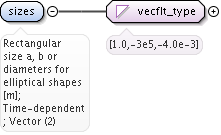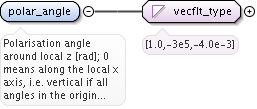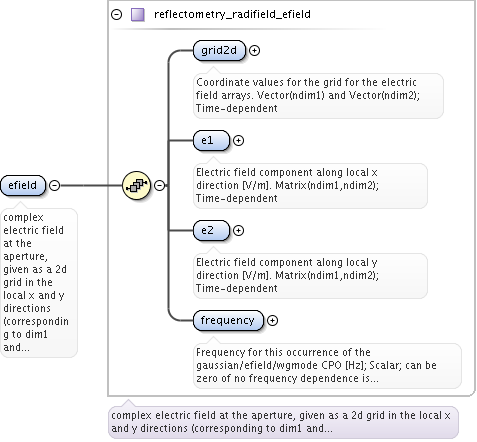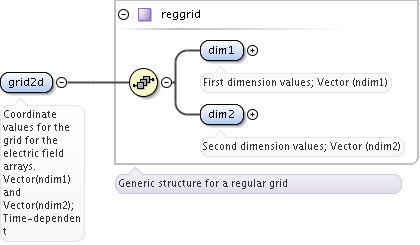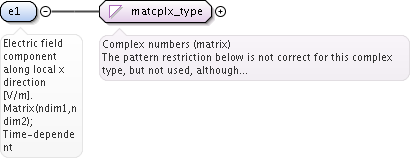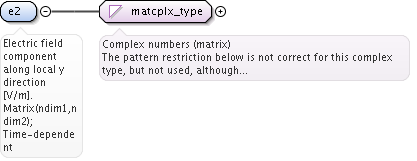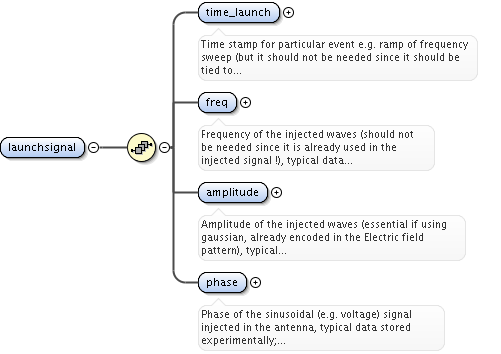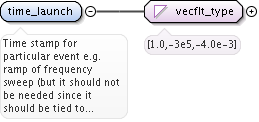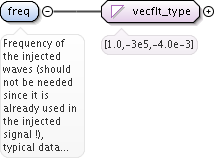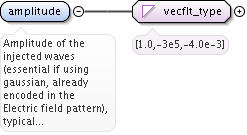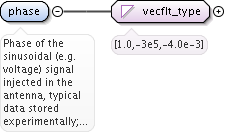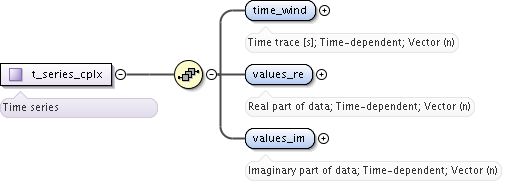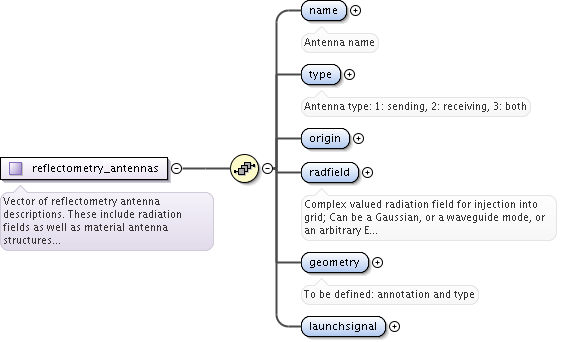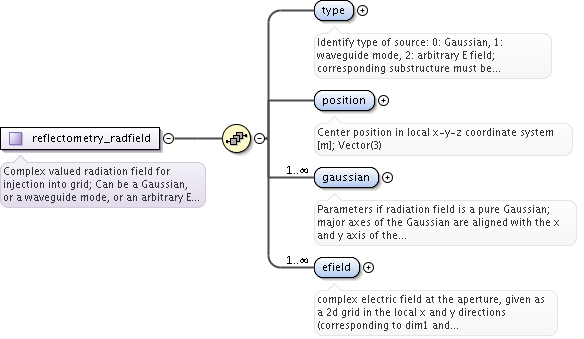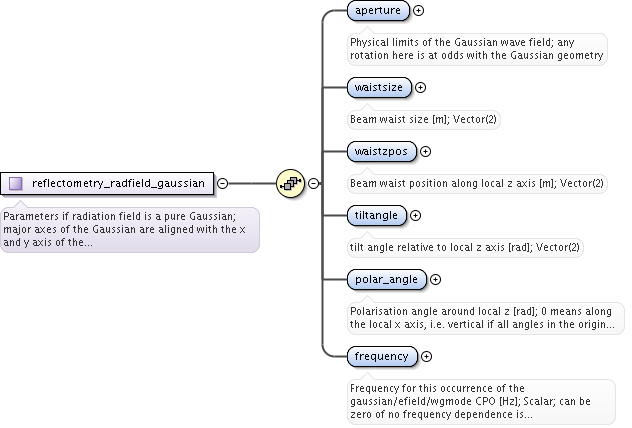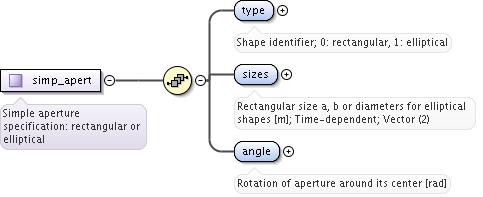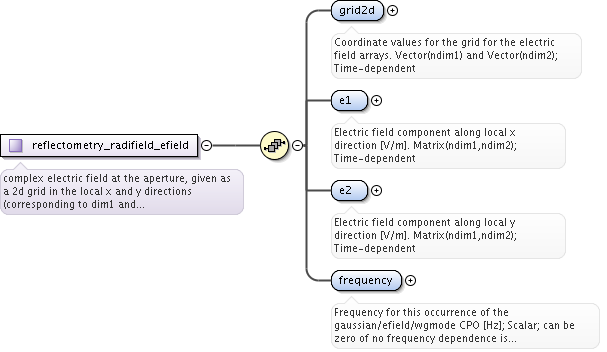<xs:complexType name="reflectometry_antennas">
<xs:annotation>
<xs:documentation>Vector of reflectometry antenna descriptions. These include radiation fields as well as material antenna structures (feeds, horns, later mirrors); Vector(nantennas); refl_received entries refer to their antenna by index in this array.</xs:documentation>
<xs:appinfo>machine description</xs:appinfo>
</xs:annotation>
<xs:sequence>
<xs:element name="name" type="xs:string">
<xs:annotation>
<xs:appinfo>machine description</xs:appinfo>
<xs:documentation>Antenna name</xs:documentation>
</xs:annotation>
</xs:element>
<xs:element name="type" type="identifier">
<xs:annotation>
<xs:documentation>Antenna type: 1: sending, 2: receiving, 3: both</xs:documentation>
<xs:appinfo>machine description</xs:appinfo>
</xs:annotation>
</xs:element>
<xs:element name="origin">
<xs:complexType>
<xs:sequence>
<xs:element name="refpos" type="rzphi0D">
<xs:annotation>
<xs:appinfo>machine description</xs:appinfo>
<xs:documentation>Reference point of the local coordinate system; the position of either the last quasi-optical element, or the horn antenna. Default is facing horizontally away from the central axis. The local coordinate system is cartesian, with the local z axis defining the nominal beam direction, x parallel to the global z, and y completing the right-handed local coordinate system</xs:documentation>
</xs:annotation>
</xs:element>
<xs:element name="alpha" type="xs:float" default="0.0">
<xs:annotation>
<xs:appinfo>machine description</xs:appinfo>
<xs:documentation>Poloidal tilt angle [rad]; angle between local z axis and horizontal plane, 0 is facing outward, pi/2 is downwards, pi inwards</xs:documentation>
</xs:annotation>
</xs:element>
<xs:element name="beta" type="xs:float" default="0.0">
<xs:annotation>
<xs:appinfo>machine description</xs:appinfo>
<xs:documentation>Toroidal tilt angle [rad]; angle between local z axis and r-z plane</xs:documentation>
</xs:annotation>
</xs:element>
<xs:element name="gamma" type="xs:float" default="0.0">
<xs:annotation>
<xs:appinfo>machine description</xs:appinfo>
<xs:documentation>Rotation angle about local z axis [rad]</xs:documentation>
</xs:annotation>
</xs:element>
</xs:sequence>
</xs:complexType>
</xs:element>
<xs:element name="radfield" type="reflectometry_radfield">
<xs:annotation>
<xs:documentation>Complex valued radiation field for injection into grid; Can be a Gaussian, or a waveguide mode, or an arbitrary E field. The latter method can be used with measured radiation patterns of actual antennas. Needs to be matched with any material structures in the geometry section of this CPO. Frequency dependence: in the launchsignal part, the lauch frequency can be varied arbitrarily, which changes the radiation field (or Gaussian waist sizes) when radiated from a fixed size antenna; therefor, all entries here can be specified frequency-dependent; Time-dependent</xs:documentation>
</xs:annotation>
</xs:element>
<xs:element name="geometry" type="xs:float">
<xs:annotation>
<xs:appinfo>machine description</xs:appinfo>
<xs:documentation>To be defined: annotation and type</xs:documentation>
</xs:annotation>
</xs:element>
<xs:element name="launchsignal">
<xs:complexType>
<xs:sequence>
<xs:element name="time_launch" type="vecflt_type">
<xs:annotation>
<xs:documentation>Time stamp for particular event e.g. ramp of frequency sweep (but it should not be needed since it should be tied to the cpo time ! ); Time-dependent</xs:documentation>
</xs:annotation>
</xs:element>
<xs:element name="freq" type="vecflt_type">
<xs:annotation>
<xs:documentation>Frequency of the injected waves (should not be needed since it is already used in the injected signal !), typical data stored experimentally; Time-dependent</xs:documentation>
</xs:annotation>
</xs:element>
<xs:element name="amplitude" type="vecflt_type">
<xs:annotation>
<xs:documentation>Amplitude of the injected waves (essential if using gaussian, already encoded in the Electric field pattern), typical data stored experimentally; Time-dependent</xs:documentation>
</xs:annotation>
</xs:element>
<xs:element name="phase" type="vecflt_type">
<xs:annotation>
<xs:documentation>Phase of the sinusoidal (e.g. voltage) signal injected in the antenna, typical data stored experimentally; Time-dependent</xs:documentation>
</xs:annotation>
</xs:element>
</xs:sequence>
</xs:complexType>
</xs:element>
</xs:sequence>
</xs:complexType> |
